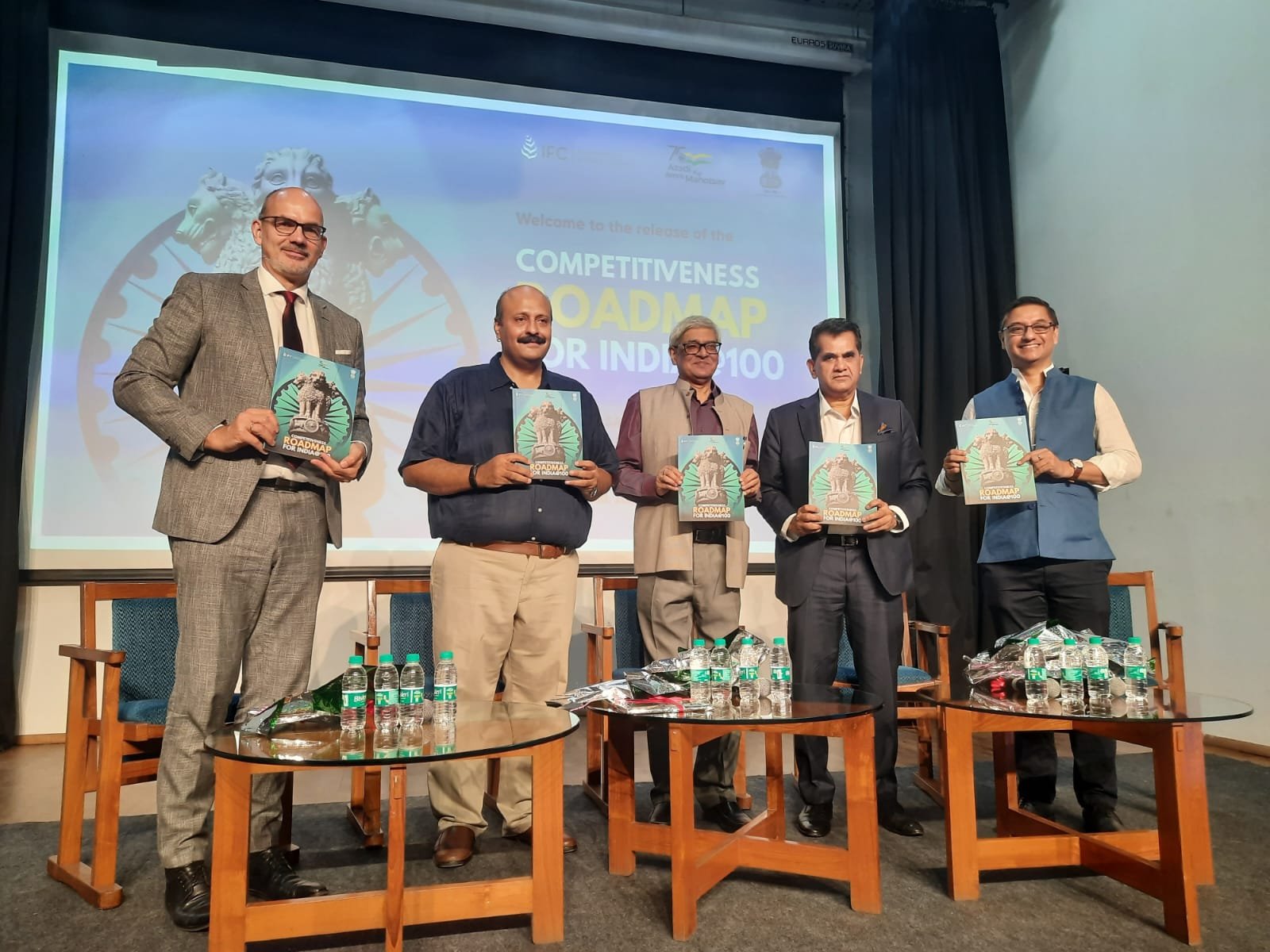The Economic Advisory Council to the Prime Minister (EAC-PM) on Tuesday released ‘The Competitiveness Roadmap for India@100’. The roadmap is a part of the India Competitiveness Initiative. It envisions setting new guiding principles for the country’s growth journey over the following years and guiding different states, ministries and partners in India’s growth to develop sector-specific roadmaps for achieving targeted goals.
Economic Advisory Council to PM (EAC-PM) releases Competitiveness Roadmap for India@100.
The roadmap is a collaborative endeavor between EAC-PM & Institute for Competitiveness that envisions setting new guiding principles for India’s growth journey. pic.twitter.com/53djFD3jSn
— DD News (@DDNewslive) August 30, 2022
The roadmap is a collaborative endeavour between the EAC-PM and The Institute for Competitiveness. It is developed by Dr Amit Kapoor, Chair, Institute for Competitiveness, Professor Michael E. Porter and Dr Christian Ketels of Harvard Business School.
The Competitiveness roadmap for India@100 is based on the Competitiveness framework developed by Professor Michael E. Porter. The Competitiveness approach puts forth the idea of productivity as a driver of sustained prosperity. It emphasizes the context that a nation is able to provide firms to be more productive and for individuals to be able to partake in the value generated through their productivity.
The India@100 roadmap guides the way for India to become a high-income country by 2047 through sector-specific and region-specific policies based on the ‘4 S’ principles. The roadmap sets out to give new guiding principles that are based on clearly defined overall goals and the articulation of a new development approach embedded in integrating social and economic agendas. The ‘4 S’ guiding principles redefine our approach to attaining prosperity by stressing the need for prosperity growth to be matched by social progress, to be shared across all regions within India, to be environmentally sustainable, and to be solid in the face of external shocks. By capturing these four important aspects, the ‘4 S’ guiding principles pave the way for resilient and holistic development.
In his message, Professor Michael Porter mentioned, “The competitiveness framework underlying the roadmap offers a strategic perspective on how to translate the diagnostics on a country’s competitiveness fundamentals into actionable insights. The solution does not lie in narrow interventions. What is needed to accelerate progress is a clear strategy enabling action to focus on key priority areas”.
Dr Amit Kapoor shared the essence of the Competitiveness roadmap as he said, “The competitiveness approach must serve as the cornerstone of India’s economic and social policy for us to be able to sustain long-term economic growth. The recommendations outlined in the roadmap factor in India’s unique advantages and are based on a new set of guiding principles, policy goals, and an implementation architecture”.
The roadmap was presented by Dr Christian Ketels, he highlighted the importance of building a complete understanding of India’s strengths and its unique advantages, which can help enhance the country’s overall national value proposition. He stated, “Understanding India’s competitiveness challenges and opportunities also help gain insights into the challenges and opportunities that the world is facing. How India manages to address its major challenges will have a bearing on how the world tackles these challenges. India’s performance matters”.
In the Keynote address on ‘India- The Competitive Edge’, Dr Bibek Debroy, Chairman, EAC-PM, mentioned, “If India’s development trajectory has to emerge faster, higher, and stronger, both government policies and the enterprises and markets functioning in the environment set by the former, are of great significance”.
Adding emphasis to the importance of a renewed approach to development, Amitabh Kant, G20, Sherpa, stated, “In an ever-evolving global context, India is working towards presenting a sustained growth model based on ease of living for its people and ease of doing business for its industries. The emphasis is not just on attaining the ambitions set for India but also on how the country gets there. The roadmap provides directions guiding the process of attaining the set goals, and outlines the kind of principle changes required for the transformation we are working towards”.

